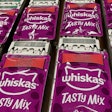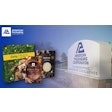Your packaging has a huge impact on your brand equity. However, finding the best packaging for your products can be a formidable challenge. One reason is, consumers often don't do what they say they will do. In traditional market research, consumers usually give rational answers that they believe to be true. On the other hand, when shopping for petfood, more emotional factors come into play.
Effective alternative
An alternative is to use psychological testing to find out what respondents really think and feel, not just what they say they think and feel. This research is based on clinical psychology vs. traditional consumer research.
We start with a proprietary questionnaire. It is based on established, empirically proven psychological-testing instruments. Instead of asking questions like "Are you happy with this product?" it employs "personification" techniques. A respondent might, for example, be asked:
If Absolut vodka were a person, would it tend to plan things in advance or do things on the spur of the moment?; or
If Mercedes-Benz were a person, would it like to chat in a group or one-on-one?
Any one of these questions, by itself, is more or less meaningless (if not downright absurd). But put together a set of the right questions and, if you know how to read the results, you have a detailed look at an individual's relationship to the product being personified. You will know what respondents really feel, not just what they say they feel.
Custom petfood research
This article will present custom research done specifically for Petfood Industry magazine and Petfood Forum 2005. It's a demonstration of how your packaging dramatically impacts your consumers' perception of your brand. Basic elements of product packaging include:
Logo design/label/banner,
Color,
Size,
Shape,
Materials,
Visuals (graphics, real-life photos, illustrations), and
Special functional features (stand-up bags/pouches, contoured canisters).
Visuals is the area we will focus on in this article.
Even though we're smarter and our products are better, why is it getting more difficult to achieve our goals? It's the consumer. The consumer has changed to such an extent that the simplistic way we used to listen to them and try to understand and reach them no longer is appropriate.
We believe in a three-point strategy:
Understanding what values associated with your brand are driving consumers to purchase and stay loyal;
Assessing which packaging elements reinforce those values driving consumer behavior; and
Leveraging those consumer values in your packaging designs.
Petfood Forum study overview
We chose to look at Purina Cat Chow. They're not a client and didn't commission the study. We chose to take a broad general example to show you how much impact subtle changes can have on your packaging.
We assessed the impact of four different package visuals on Purina Cat Chow's brand equity/loyalty. The study sample consisted of 250 men and women 18-49 years of age; all respondents were "cat owners;" all were aware of the Purina Cat Chow brand.
Respondents were surveyed in person at central location interview facilities. We put them through extensive one-on-one interviews and used a questionnaire to discover psychological motivators for:
The ideal cat food brand; and
The Purina Cat Chow brand.
After viewing the Purina Cat Chow Brand in the context of each packaging "visual," the respondents were asked to re-evaluate the brand. The results tell us the percent each attribute contributes to the purchase decision (the number in parentheses) and the most important attributes in getting future purchases. The loyalty drivers in order of importance were:
A. Part of my life: owner and pet (38%);
B. Enrich my cat's life: pet only (30%);
C. Correct proportion of nutrients: food only (23%); and
D. Full range of petfood types: other product offerings (9%).
This is what we would call a leading indicator or predictive brand equity method. If you're a successful brand, you want to continually monitor how your consumers are viewing their next purchases. Something as simple as changing the photo can dramatically impact your brand's equity. It can improve how your brand is perceived.
To stand out on today's petfood shelves, you must understand what aspects of your brand are driving your consumers to purchase and stay loyal. Assessing which packaging elements reinforce the values that are driving future consumer behavior is more complex than you might think. However, if you leverage those consumer values in your package design, your result will be better brand equity.
Leveraging loyalty: The last frontier
We are passionate about customer loyalty for two reasons:
It's a leading indicator of profitability; and
It's the only thing left to talk about.
Why do we say customer loyalty is the only thing left to talk about? Because after right-sizing, best-practicing, and re-engineering, that is, after the changes of the 1980s and 1990s, many companies are now doing a great job. Still, they are in danger of seeing their brands become excellent, undifferentiated commodities.
Keep in mind that it costs 7 to 10 times more to recruit a new customer than to keep an existing one. An increase in customer loyalty of only 5% can lift lifetime profits per customer by as much as 95%.
By understanding what keeps your customers loyal, you can:
Plan within a leading indicator of profitability.
Know how to most efficiently sequence initiatives.
Fight commoditization.
Leverage competitive strategies to your advantage.
Enhance your brand's equity.
Focus on growth in an increasingly competitive marketplace.
Packaging can play a large part in building customer loyalty and thus, brand equity.
For the foreseeable future, leveraging customer loyalty will be the primary means by which the most competitive companies will break away from the pack.












